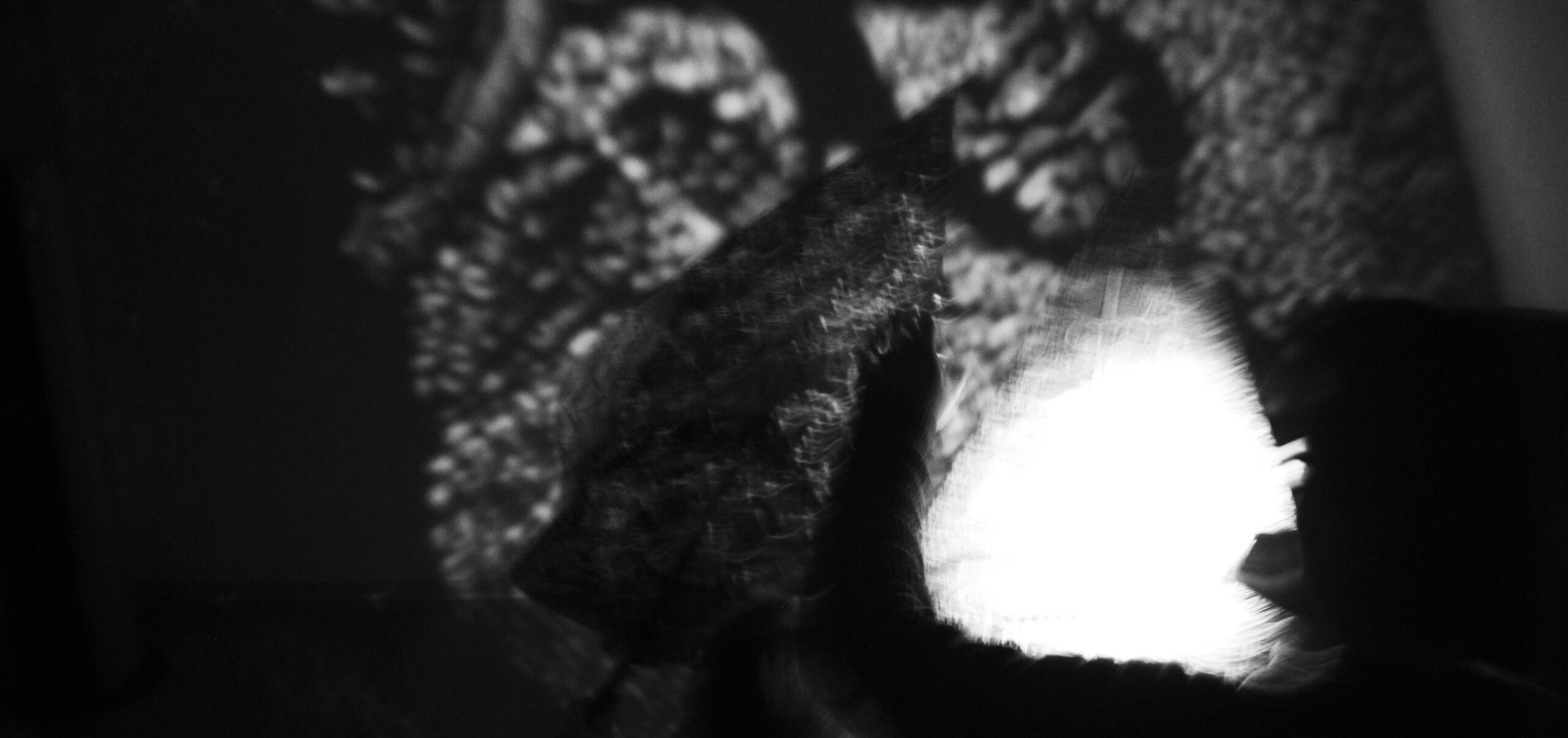Distant Memories of the Void
Distant Memories of the Void is an ongoing work by the visual artist Emese Csornai and musician Bilawa Ade Respati on the concept of sunya, the Indonesian word for the void. Each approached the concept through their own perspectives, finding expression in their collaborative practices. The first iteration of the work is exhibited at the Haus der Indonesischen Kulturen in Berlin in March 2024.
Distant Memories of the Void

Distant Memories of the Void is an ongoing work, taking the Javanese Gamelan and Shadow Puppet (Wayang) as its starting point. Center to the work is the concept of sunya (void): a word that can be traced to Buddhism. However, the idea of the void predates the period of Buddhist dynasties in Indonesia. The work is Inspired by an ancient belief from the pre-Hindu Javanese period upon the Great One Void (Sang Hyang Taya). The work explores the concept sunya as it appears as a spiritual concept and its many expressions in the culture, while trying to give it meaning in the contemporary world.In the middle of digital realms and technological advances, what values are there in reflecting upon spiritualities? Where individuality is celebrated, does it still relevant to let oneself go, losing it amidst a communal ritual? When all atoms are already subject to scientific investigation, where do we find the void and its omnipotence? Guided by these questions, the work travel on the dialectical path between the technological and the ethnological.
Visual
The goal is to have a shadow puppet theater without the puppeteer (Dalang), and working with the concept of Sunya. The latter is achieved by either visualizing the process of extracting “nothingness”, or essential characteristics by removing their attributes. The visual is also motivated by an attempt to retell a part of the story of Dewa Ruci---an episode available only in the Javanese version of the epic Mahabharata. There is a conceptual overlay with the music, either informed first by the visual aspect or the other way around. There are two systems offered to the viewer: one is of light, and the other is of epic. The preceding information possessed by the viewer creates the framework for processable content.
Music
The music for the automaton is based upon (1) an attempt to closely translate the visual element; (2) expanding musical technique available in the tradition; and (3) reinterpreting musical concepts in Javanese music. Technology becomes a tool in this endeavor, ranging from the usage of music information retrieval techniques to quantum computing to produce musical materials. The automaton is not intended to replace human performance or to mimic it. Hence, the music is written with full acknowledgement of the mechanistic aspect thereof and its contrast to human capability in performing. The absence of the performers is still a remembrance of the ancestors while creating a new spiritual sonus for the digital age.
Exhibition
Gamelan Music Automaton and Visual Installation
22.3.2024--26.3.2024
Haus der Indonesischen Kulturen
Theodor-Francke-Straße 11, 12099 Berlin
The first iteration of Distant Memories of the Void is a gamelan music automaton and visual installation. Taking the Gamelan music and shadow puppetry as its starting point, the installation is a performance with the absence of the performers. It narrates distant memories about the One Great Void: one that cannot be perceived by any perceptions, described only through approximations and metaphors. A story unfolds through the synthesis of sound, video, and light. It is primordial yet structured; dense yet empty: a play that unfolds through the perception of its beholder.
Acknowledgment
The work is funded by Initiative Neue Musik Berlin and supported by Haus der Indonesischen Kulturen. We are grateful for the advice given by Ki Sujarwo Joko Prehatin, Elisha Orcarus Allasso, Trinawangwulan Sudarga, Marius Bratoveanu, and Nina Wesemann.
Credits
Bilawa Ade Respati / Concept and Music
Emese Csornai / Visual Concept
Adrian Latupeirissa / Technologist
Sara Enyingi / Photo
John Carlo / Graphic Design
Dico Baskoro / Documentation
Taïca Replansky / Moderation


Emese Csornai
Emese Csornai is a lighting designer and researcher with an audiovisual arts background. Her work focuses on how the language of given visual media directs its consumers’ gaze. She bases her practice on feminist thought, integrating non-western lineages of knowledge embodiment and storytelling, emboldened by the reassessment of the single dimension of western colonialism and global political tokenism. This led to authoring theatrical performance, research, installation works, and collaborations.
Website
Full Portfolio
Research Publication
Factual Description
Bilawa Ade Respati
Bilawa Ade Respati is a musician. He performs on and composes for the Javanese gamelan and the guitar, with output as diverse as music theatre to web sound installation. Respati uses a syncretic approach to his work: from music information retrieval to the performing arts, from the art of Javanese Karawitan to algorithmic music composition. His artistic interest lies in the dialectic between tradition and innovation, as well as the revaluation of tradition in contemporary life.